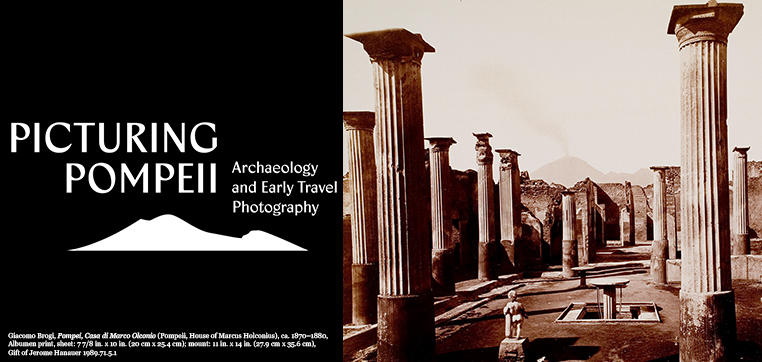
Since the first excavations of Pompeii in 1748, the ancient Roman city that Mt. Vesuvius buried in 79 C.E. has fascinated scholars and tourists alike. In the late-19th century, Italy became a prime destination for photographers, who were drawn to its Roman ruins and artworks. Photographers established large firms in tourist centers like Naples, where they sold souvenir prints and albums. In addition to serving a tourist market, nineteenth-century photographers worked closely with Italian archaeologists to document the excavations at Pompeii. This exhibition explores how, in the late-19th century, the new medium of photography played a key role in Italy’s developing tourist industry and shaped the public’s perception of Pompeii’s ancient ruins for years to come.
This exhibition is curated by Nicole Berlin, Assistant Curator of Collections, with generous support from the Sandra Cohen Bakalar '55 Fund, and with special thanks to Wellesley College Special Collections.